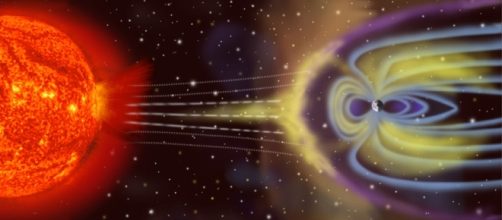A team of scientists from Japan found evidence that oxygen from the earth´s atmosphere is travelling to the surface of the moon every time the moon crosses the earth’s plasma sheet, which occurs once a month. The ions were found to be displacing slower than those coming directly from the solar wind, suggesting that they originate from the earth´s upper atmosphere. Previous discoveries have evidenced of oxygen-17 and 18 isotopes, which are not known to come from space, but from the earth´s ozone layer.
Oxygen ions on earth´s plasma sheet
While the moon is constantly bombarded by particles from the solar wind, it is protected from this charged particles during a short period of time when the earth is positioned between the sun and the moon; however, it is during this brief period of time that oxygen ions are transported to the surface of the moon.
The discovery was made by Japanese Spacecraft Kaguya which observed varied quantities of 1-10 KeV O+ ions that were evidenced only when the moon was travelling through the earth’s plasma sheet.
Kaguya Spacecraft
The main objectives of this vehicle are to study the origin and evolution of the moon and to help develop the necessary technology for the future exploration of the earth´s natural satellite. It consists of a main satellite positioned at about 100 km of altitude and two small satellites-Relay Satellite and VRAD Satellite in polar orbits. The orbiters will transport instruments for the study of the moon, on and off the moon.
Moon bombarded by the solar wind
Regularly, oxygen atoms are ionized by ultraviolet light in the upper atmosphere of the; this usually causes them to escape the atmosphere and travel to the magnetosphere.
The magnetosphere surrounds the earth and is due to the earth´s magnetic field, but it can be stretched farther away from the earth due to the solar wind. Throughout a lunar cycle, the moon is bombarded by the solar wind for 5 days. It was found out that approximately 26,000 oxygen ions may hit one square meter of moon´s surface every second.

